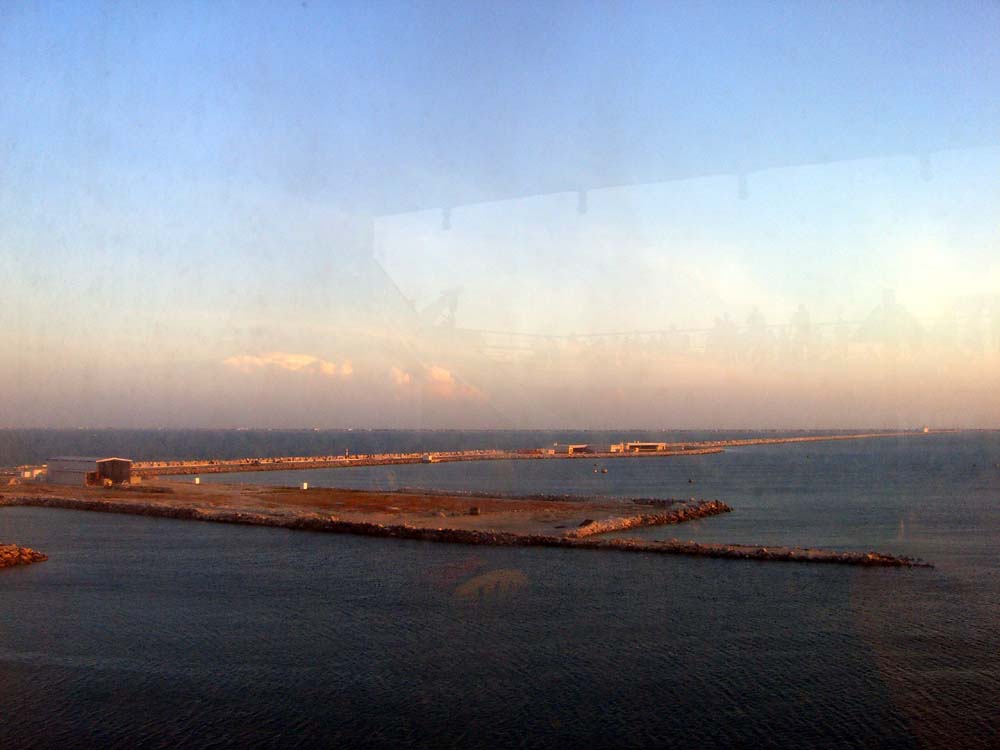Caribbean cruise, November 17-22, 2007: part 3: Mayan pyramids in Chichen Itza
The next port of call on our cruise was Progresso, Mexico. From there we went on a tour of the ancient Mayan ruins of Chichen Itza.
I didn’t get to see much of Mexico on this trip, except what I saw out of the tour bus window. The towns along the way, starting with Progresso, were rather dilapidated. To get to the ancient ruins we had to pass a lot of modern day ones. The 1-2 story buildings that lined the streets had gaps between them like missing teeth, where formerly occupied houses had been left to decay. In some places the inner courtyards of the houses had become open where a front wall had crumbled; I could see smoke, but not a single soul that was concerned with the fire: were those fires purposeful? Did people cook on an open fire right in the middle of their backyards? Or did they incinerate their trash, or…? Who knows? I didn’t have time to speculate as the bus kept moving (too fast for me to take pictures) and new scenes replaced the old ones.
Even if you only spend a few hours in Mexico and stick to tourist routes, you can still see enough evidence that things are different there than in the US. Whenever somebody walked into a public restroom in Tulum (a site of Mayan ruins that we visited two days before) , a restroom attendant would say: “water ees normal dee color”. If you took a look at any of the toilets, you could see why she kept repeating it: the water in the toilets was dark brown, the kind of color that would make you go “ewww”. Of course, it may have been more effective to plaster the bathroom with signs in several languages, but then the attendant would be out of job. Stuff like that can lead you to ruminate on topics like poverty, many faces thereof. Poverty is not necessarily having nothing to eat, it is also when the only job available to you is having to repeat the same phrase over and over, robotically, every 5 seconds. I’m sure I speak for a lot of people when I say I would turn into a blubbering idiot after doing this kind of work for just a few hours.
A shop in Progresso, Mexico with a sign “Frutas Y Verduras”, seen out of a bus window on the way to Chichen Itza.
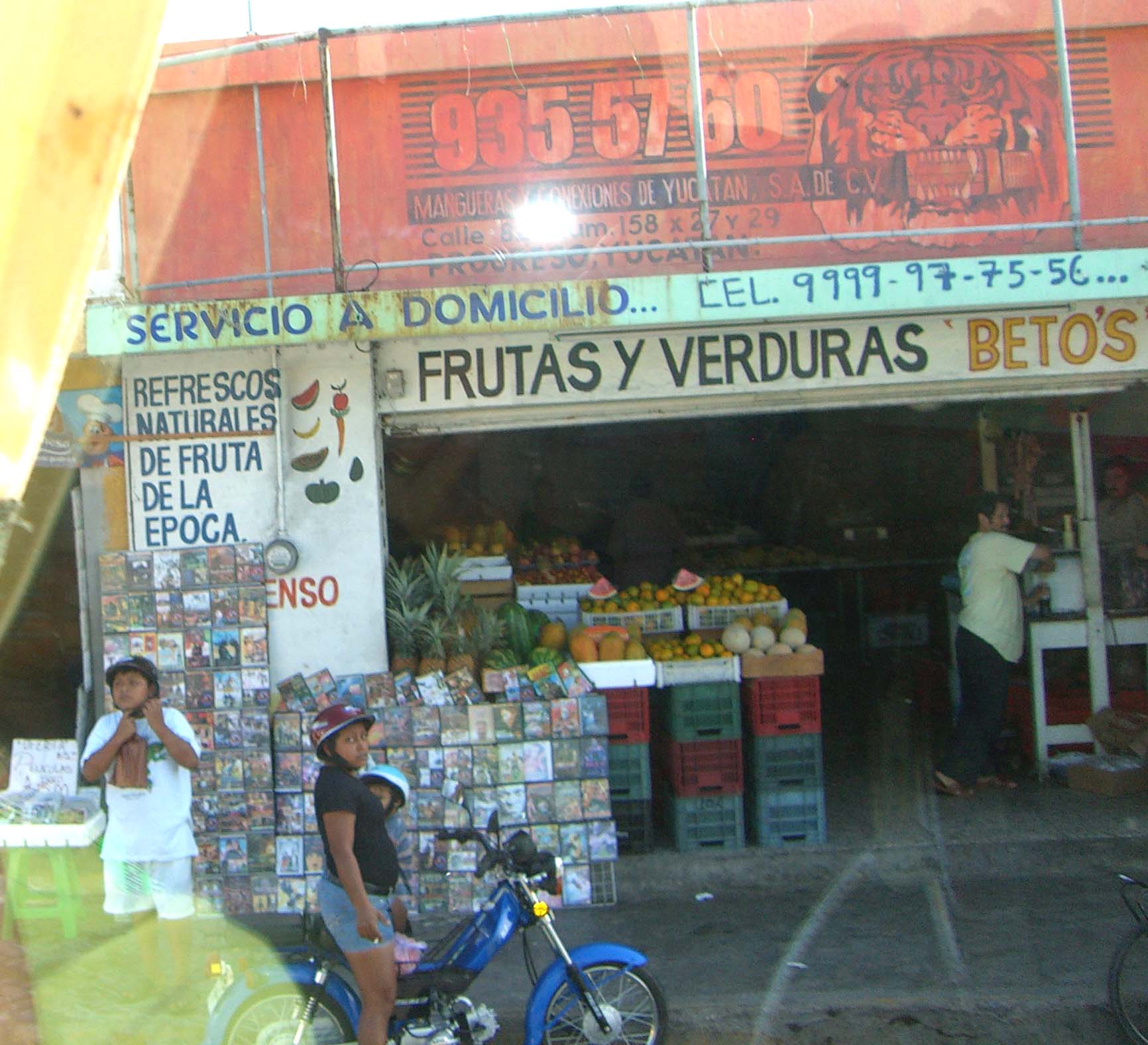
Chichen Itza is one of the best known Mayan ruin sites. It’s a 2 hour ride from Progresso. So we spent 4 hours on the bus and only about 2 hours in Chichen Itza. But even if I had spent several days there, I wouldn’t have more to say about it than Wikipedia has. So what can I say that others haven’t? I can only speak about my own clumsy attempts to grasp the greatness of this historical site.
The tour guide barraged us with information, much of it pertaining to the stone carvings on the walls of the Mayan ritual ball game court. I might have digested it better, had I a bit more time to tune my eye to the ancient Mayans’ rather liberal interpretation of human anatomy. The carvings on the wall of the ball game court depict human sacrifices performed at the ball game. Or they would, if you could make out actual human figures in those pictures. You can see a semblance of a face here or there, but mostly the carvings look like abstract ornaments. Yet to our guide they were clear as day. This is a priest holding a knife over a kneeling victim, he said. And over there he holds a severed head. And here is blood gushing forth from the victim’s neck. Actually, I think I got a picture of the gushing blood. It is one of the images below.
And I think I was able to make out a severed head in one of the pictures, although it was hidden really well.
I was left confused about some important aspects of human sacrifice. S and I could not agree if the guide said ancient Mayans sacrificed a player from the losing or the winning team. I thought it was logical to assume that a member of the losing team was sacrificed. However, S thought that since being sacrificed to the gods was a great honor, that honor fell to one of the winners!
Here is the Mayan ball court in Chichen Itza.
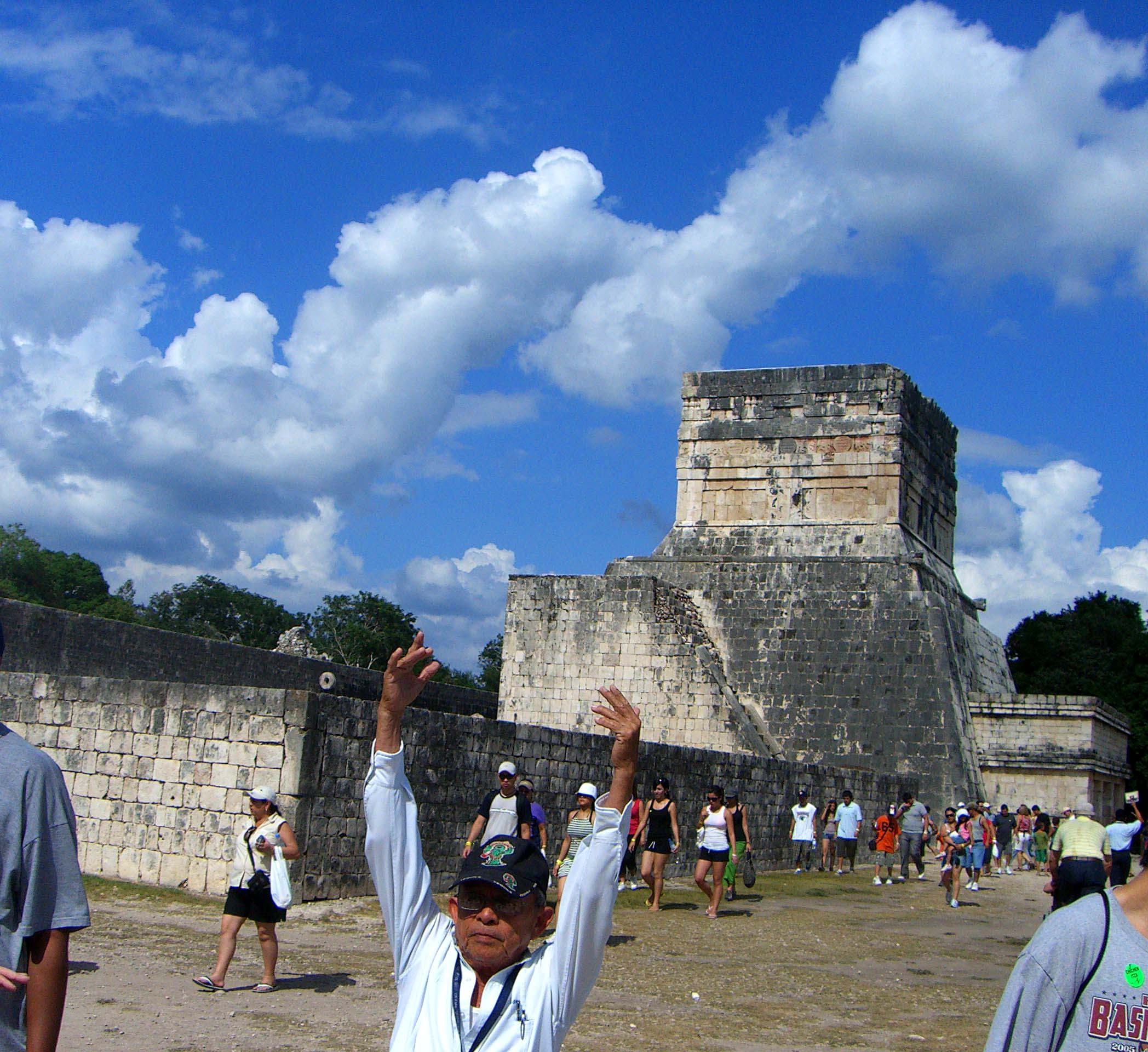
This is the most prominent pyramid of Chichen Itza: the Temple of Kukulcan (Quetzalcoatl), also called El Castillo, or the Castle, by the Spanish.
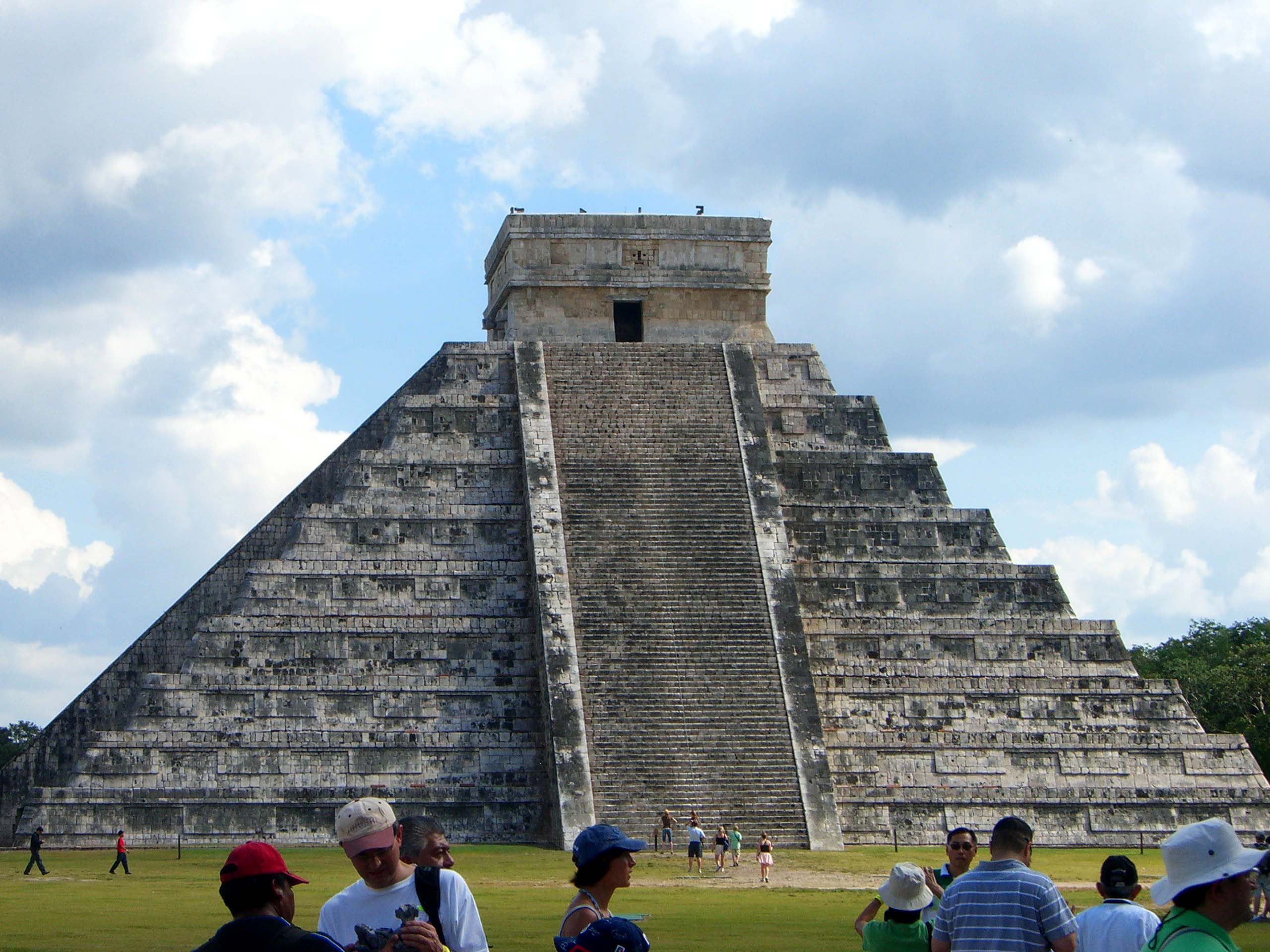
A sculpted panel on the wall of the Great Ball Court of Chichen Itza. They represent the players of the ceremonial ball game, but for an untrained eye, like mine, the figures are really hard to make out. I can kind of see a couple of human faces in this image, but not much more.
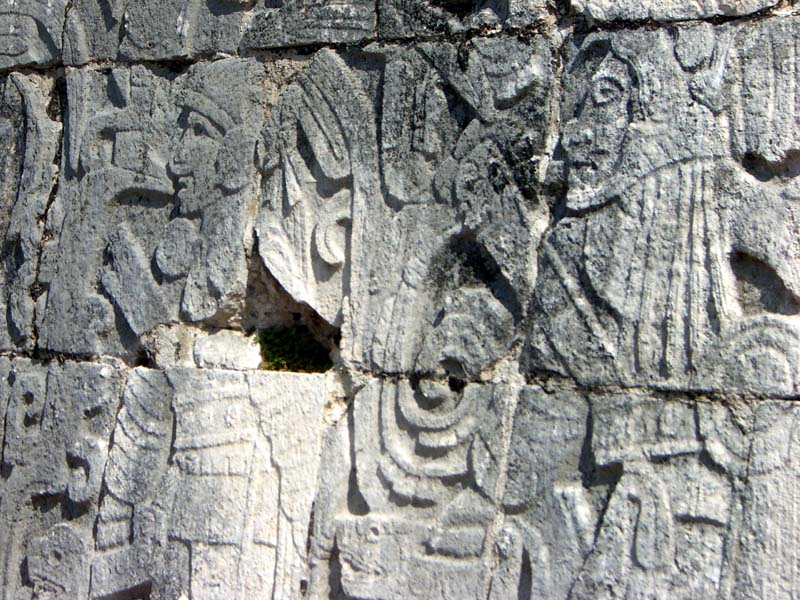
According to our tour guide, this carving represents a player who has been beheaded and sacrificed to the gods. Seven streams of blood are sprouting from his neck (I can only count 6, though) and become snakes. I see a few other puzzling details in the picture. Is that a disproportionally minuscule head hanging from his neck? And his arms seem to originate in all the wrong places.
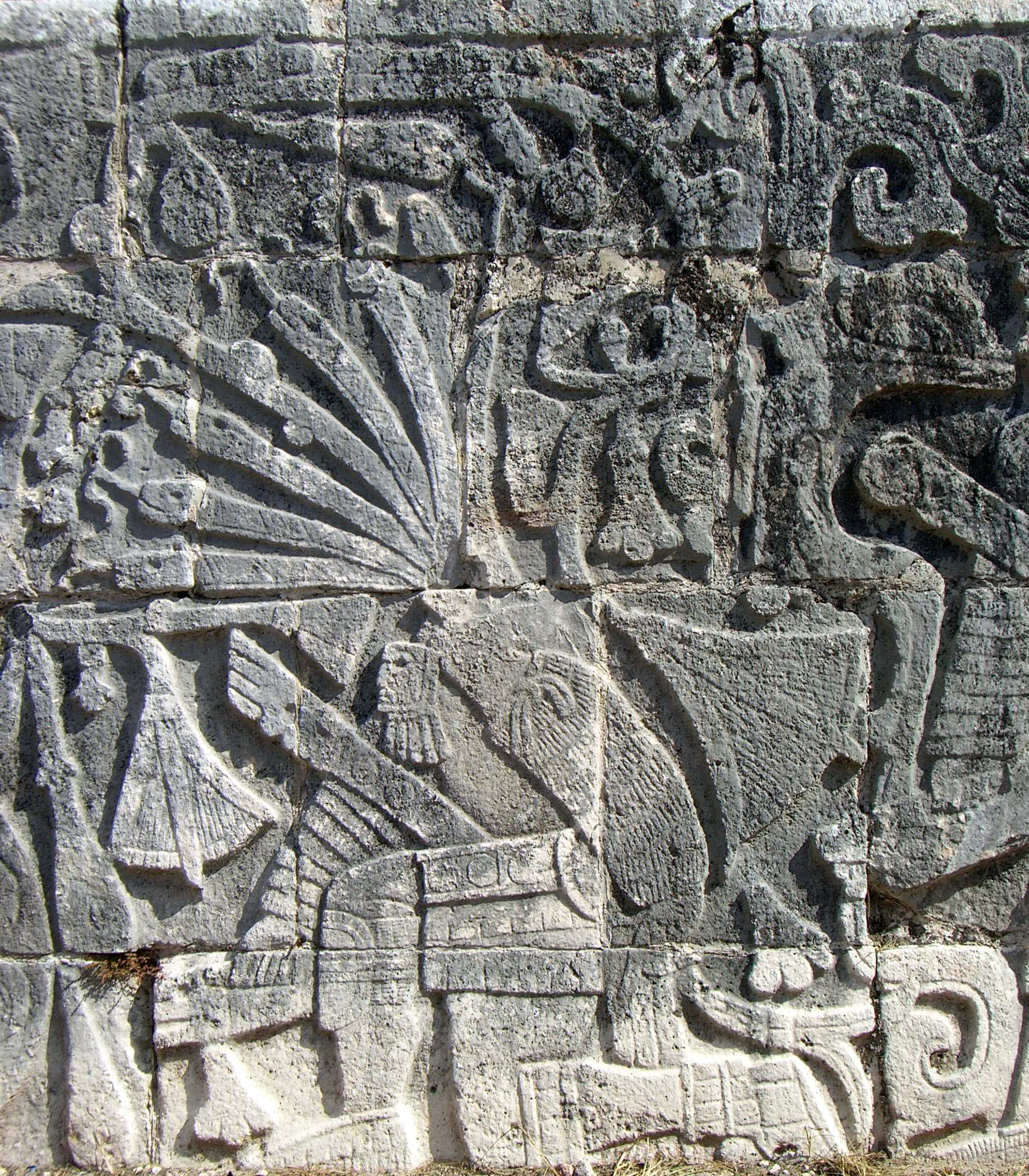
I was told that in this picture a Mayan priest holds a sacrificed player’s severed head. Try as I may, I can’t really see a head in it. Mayan artists really seemed to take liberties with human anatomy, or maybe it was a different sculpture.
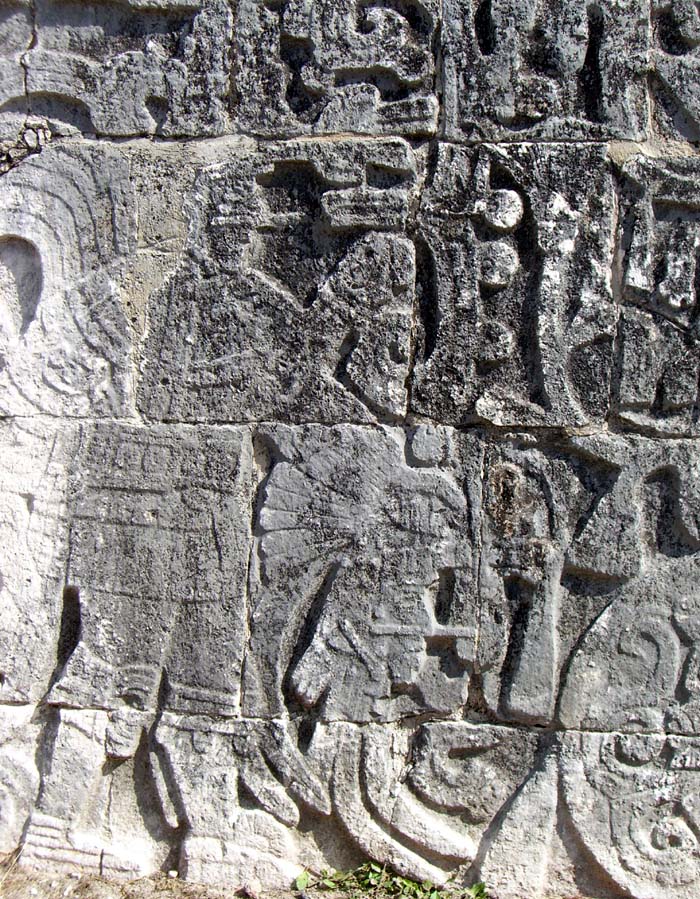
In this stone carving below, the person (a priest?) does indeed hold a severed head. So maybe that’s the picture the tour guide was talking about.
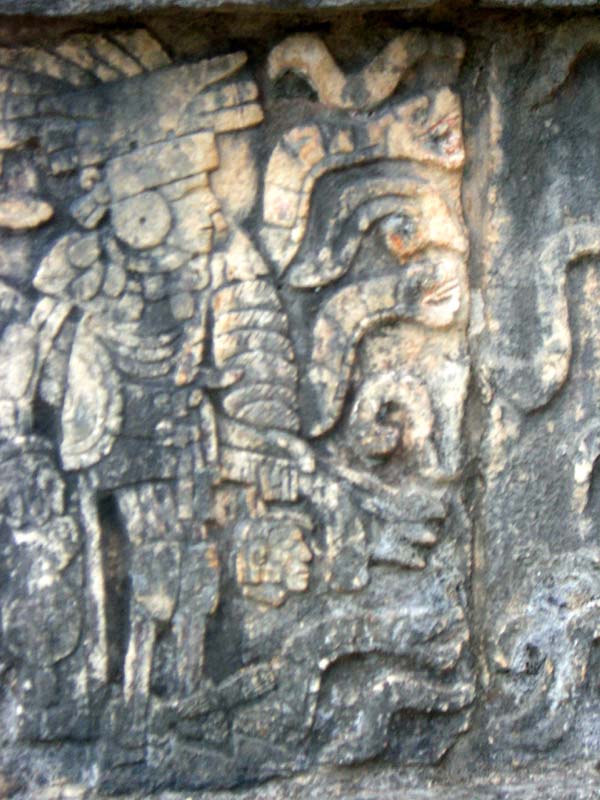
A structure with serpent heads. If our tour guide mentioned its name, I don’t remember it. Nor do I know why its sides are covered with fabric.

An eagle (?) holds a human heart
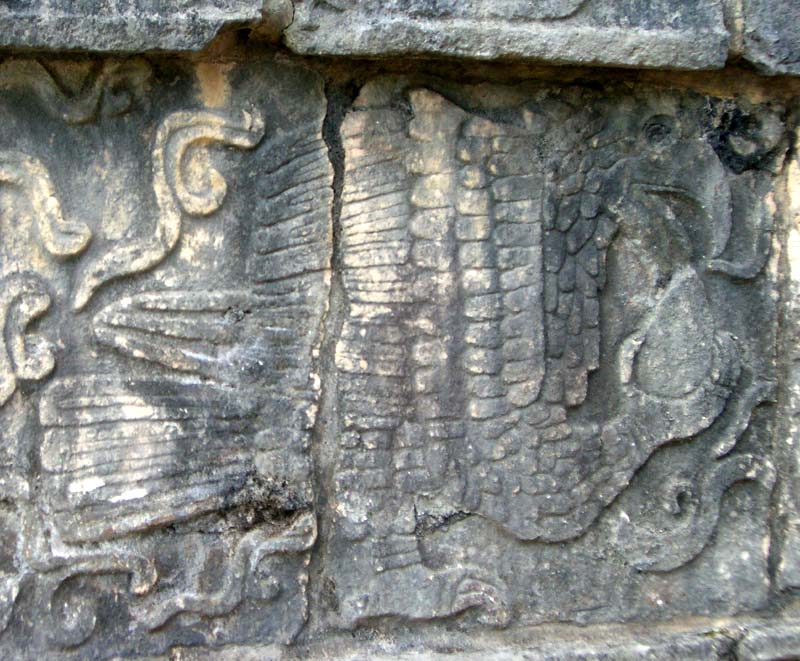
The Temple of the Warriors
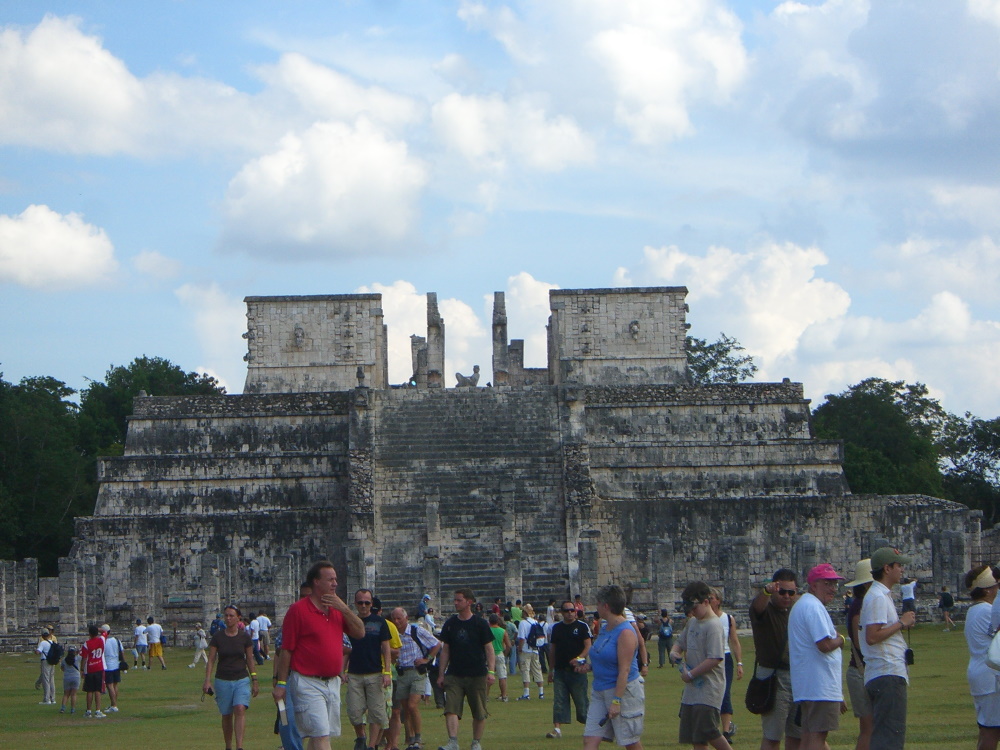
A reclining figure at the top of the Temple of the Warriors
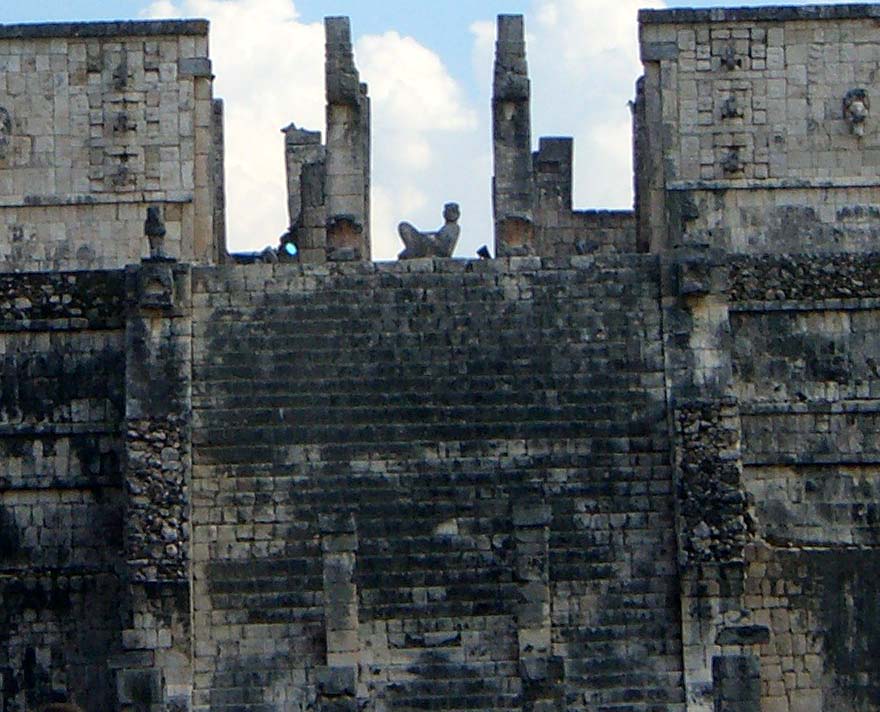
Me in front of the Temple of the Warriors
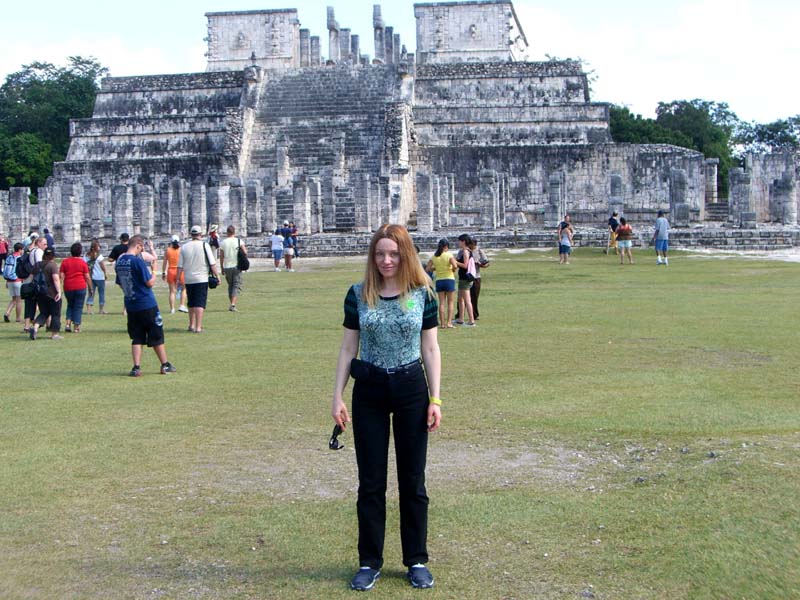
The Temple of the Warriors from a different angle

The crumbling sides of the Kukulcan pyramid
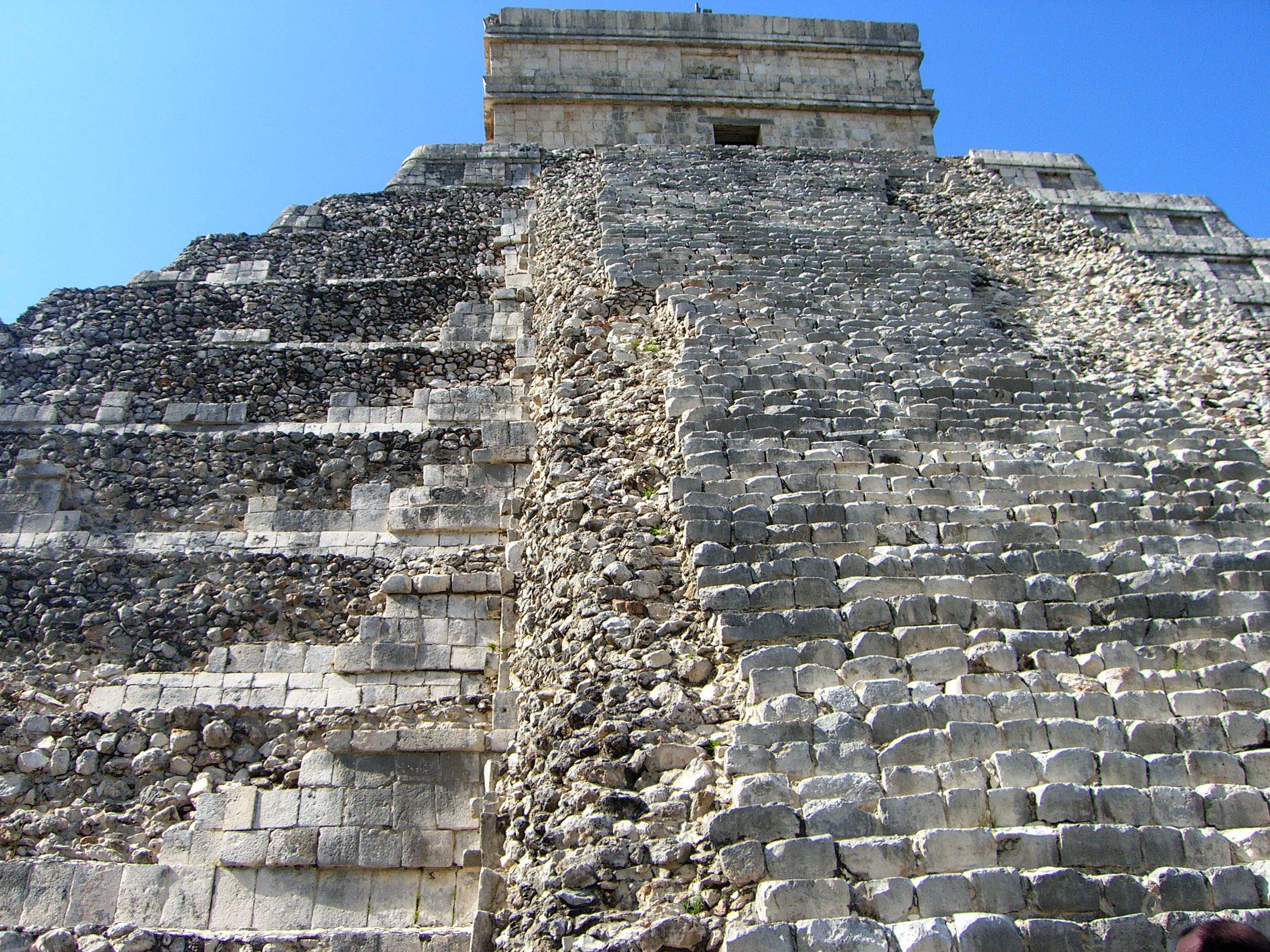
A sacred cenote at Chichen Itza. Cenote is a freshwater-filled sinkhole. At the Chichen Itza cenote they used to sacrifice people to the gods.

Pyramids, but not Mayan. These are thatched roofs of modern day houses in a Mexican town we passed through on the way to Chichen Itza. Half asleep for most of the trip, I missed all the town name signs.
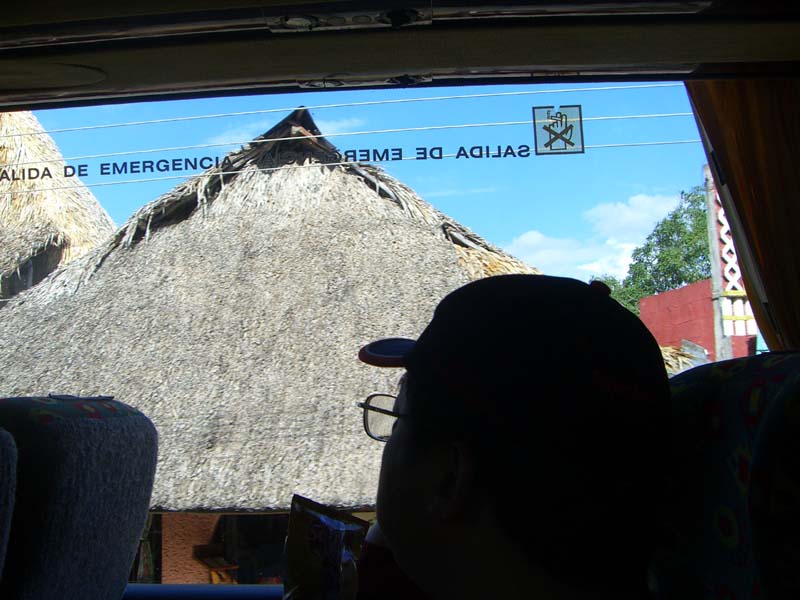
A church seen out of a bus window in a Mexican town we passed through on the way to Chichen Itza.
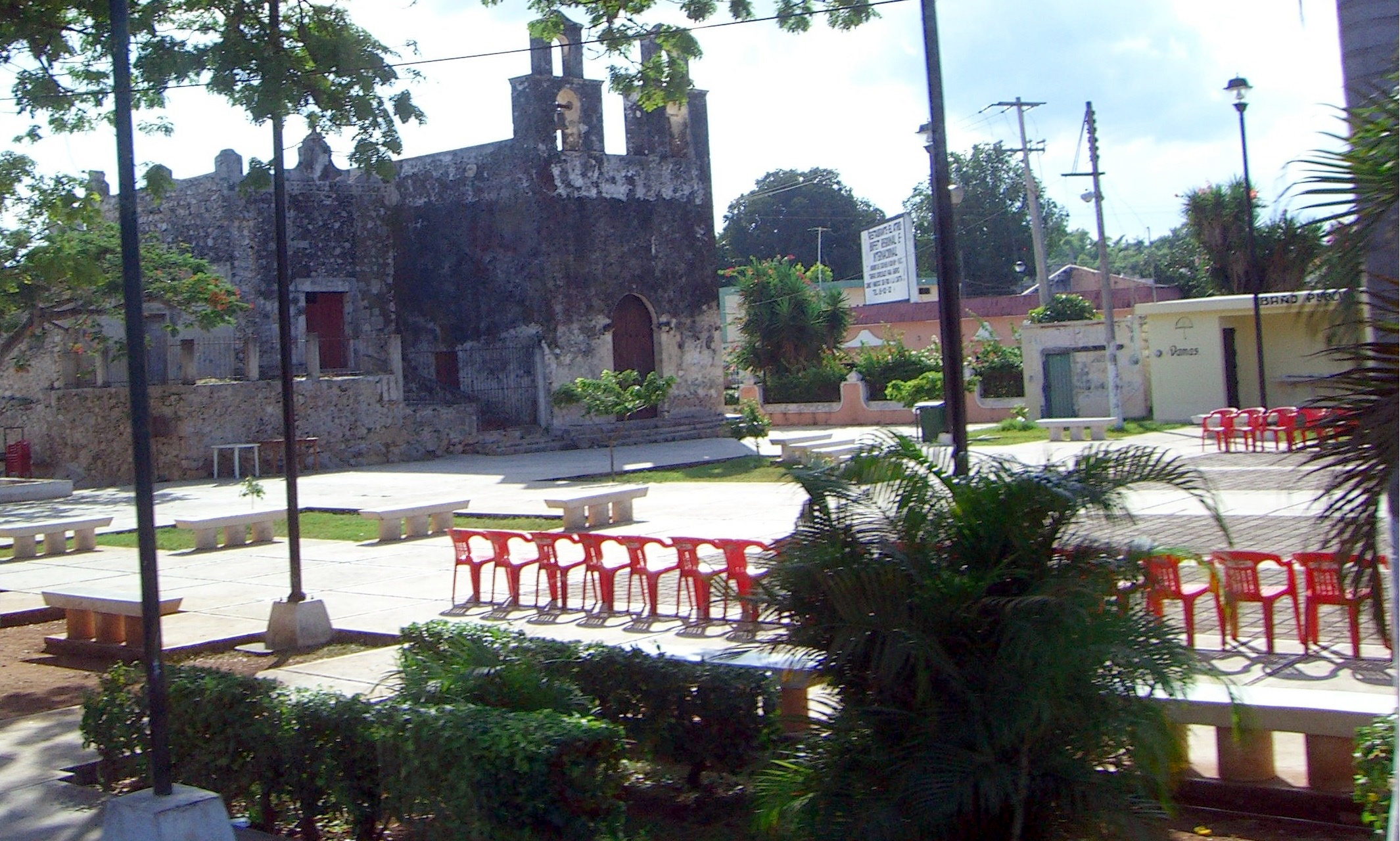
A round house with scrollwork fence, seen out of a bus window. A beautiful house, a beautiful fence, but what’s up with those gaping holes in place of windows? This does not seem to be by design.
The roads from Progresso to Chichen Itza (I don’t remember the names of towns we passed through) are lined with houses like these, which must have seen better days.
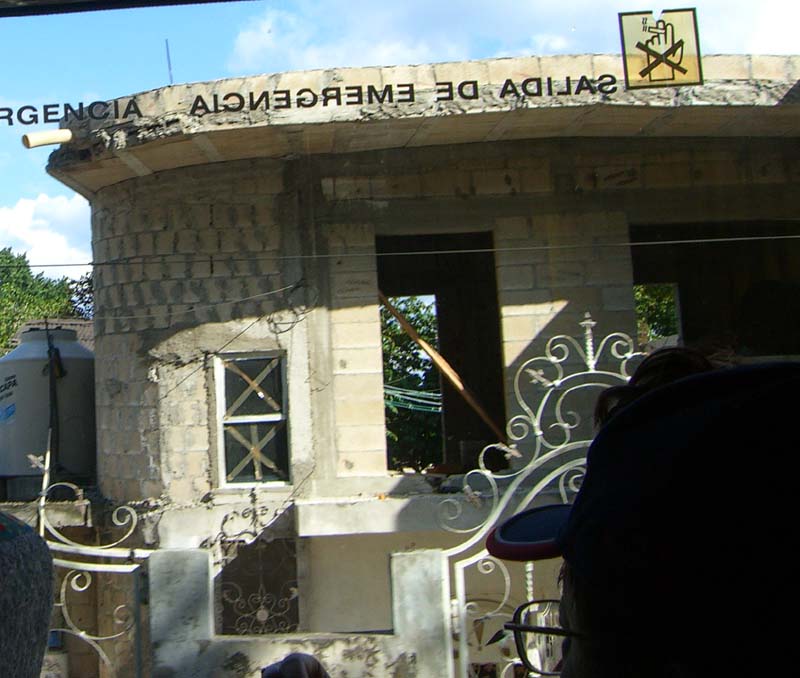
Crumbling houses and fences, seen out of the bus window
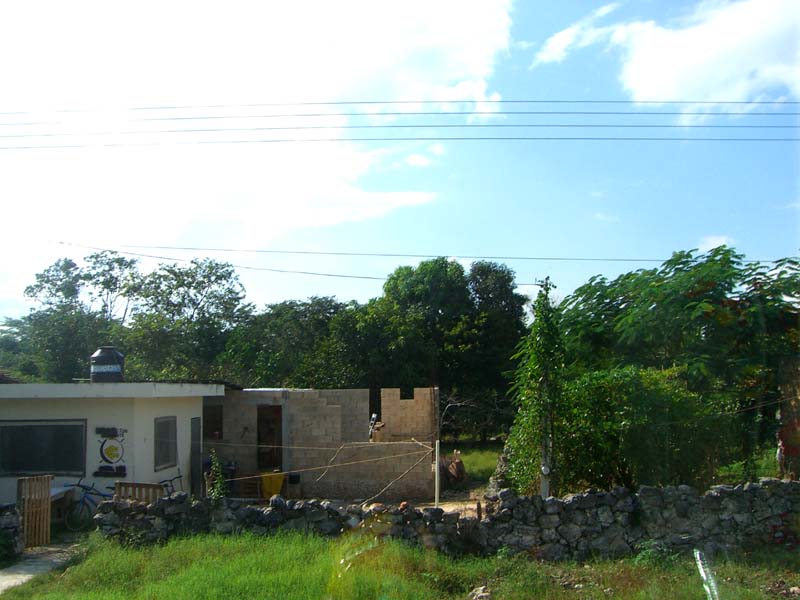
The pier at Progresso (Mexico) is something like 5 miles long (though I may be wrong). It is one of the longest in the world.
